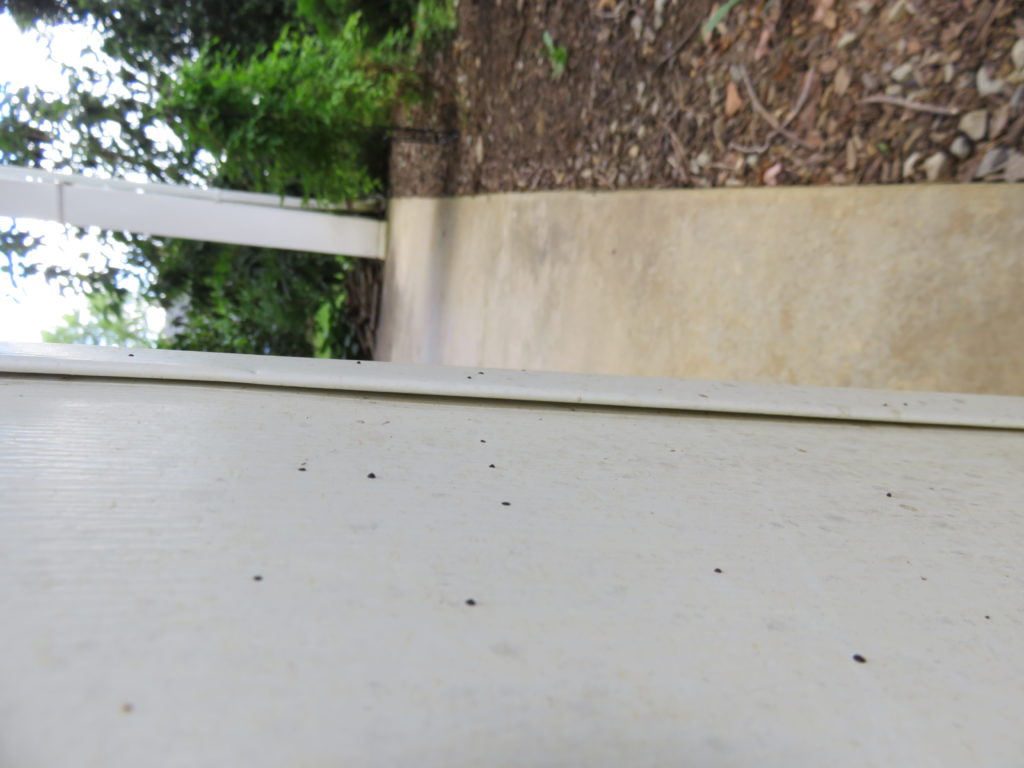
If you notice tiny black specks covering your home or garage siding or coating your auto parked nearby. The problem may be artillery fungus, also called shotgun or cannonball fungus (Sphaerobolus). Tiny fungal spores, barely 2 millimeters wide, propel themselves up to 20 feet away from the ground onto vertical surfaces.
The fungus generally targets light surfaces such as vinyl siding or light colored vehicles. They are tiny black specks that don’t wash off with a coarse water spray from a hose. The “fungal dust” may also ruin your car’s finish.
Fungus activity most often occurs during cool rainy spring and fall days, particularly in shady areas. Look for it on the shady north side of your home. Artillery fungus stops producing spores when temperatures rise over 78°F, and is not as much a problem in the summer.
Landscaping with certain kinds of wood mulch creates the problem, but not all kinds of organic mulches are the source. Artillery fungal spores don’t cause any structural damage, but they may cosmetically stain vinyl siding — particularly if the spores have stuck onto surfaces for more than a few days. Don’t wait! With swift action, you may be able to power wash the spores off. Don’t use harsh cleaners or abrasives that might damage your home siding.
While the obvious solution may be to stop mulching, smart mulching is a better approach:
- add a fresh layer of mulch around home foundations in the spring. Artillery fungus reproduces (sporulates) in old decayed mulch (or last year’s mulch).
- Mushroom compost spread atop old landscape mulch will suppress artillery fungus sporulation by 40%.
- Use large chunky pine bark (nuggets) around foundation plantings.
- Instead of mulch plant low maintenance groundcovers near home foundations.
- Replace wood mulch with landscape fabric and small stones.
Dyed wood mulch is not effective against the fungus.

 Posted in
Posted in 
